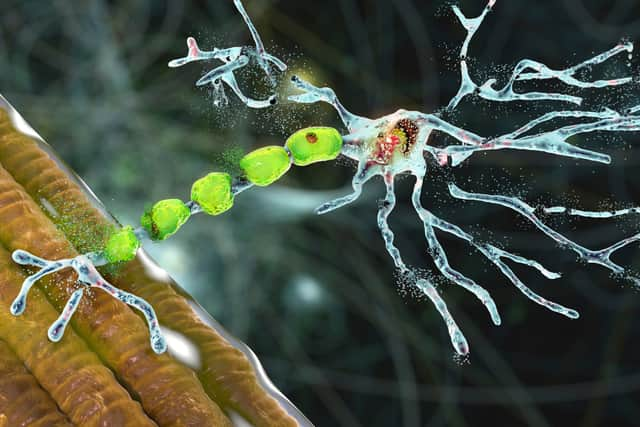What is ALS disease? Amyotrophic lateral sclerosis symptoms, treatment, cure - Bryan Randall illness explained
and live on Freeview channel 276
In the wake of the news that Bryan Randall, the longtime partner of Hollywood megastar Sandra Bullock, had died aged 57 after a secret battle with ALS, people are desperately trying to find out more about the disease.
His passing was confirmed through a family statement on Monday (August 8) which reads: "It is with great sadness that we share that on Aug. 5, Bryan Randall passed away peacefully after a three-year battle with ALS. Bryan chose early to keep his journey with ALS private and those of us who cared for him did our best to honour his request.
Advertisement
Hide AdAdvertisement
Hide Ad"We are immensely grateful to the tireless doctors who navigated the landscape of this illness with us and to the astounding nurses who became our roommates, often sacrificing their own families to be with ours. At this time we ask for privacy to grieve and to come to terms with the impossibility of saying goodbye to Bryan."
Bryan is survived by Sandra Bullock, two of her children they raised together - Louis, 13, and Laila, 10 - as well as Randall's older daughter. His friends and family have asked for any donations to be made to the ALS Association and the Massachusetts General Hospital in lieu of flowers.
ALS - which in full means Amyotrophic lateral sclerosis, and referred to in the UK as motor neurone disease - has hit the headlines coming off the tragedy. Here is everything you need to know about the illness.
What is ALS?


According to the National Institute of Neurological Disorders and Stroke, ALS, which is also known as Lou Gehrig's Disease, is "a rare neurological disease that affects motor neurons—those nerve cells in the brain and spinal cord that control voluntary muscle movement. Voluntary muscles are those we choose to move to produce movements like chewing, walking, and talking."
Advertisement
Hide AdAdvertisement
Hide AdThe disease is progressive, which mean that the symptoms get worse and more severe over time. It is considered a type of motor neurone disease, which stops messages being sent to muscles leading them to weaken and waste away.
It typically strikes those between the ages of 55 and 75, though you can be diagnosed with ALS at any age. Men are more often affected.
What are the symptoms of ALS?
Experts say early symptoms of ALS involve the following:


As a person suffering from the illness sees their condition worsen, you may develop further problems with the following:
While some uncommon symptoms of ALS include experiencing issues with language or decision making, as well as developing a form of dementia gradually over time.
Advertisement
Hide AdAdvertisement
Hide AdCan ALS be treated and is there a cure?
There is no cure or treatment to alleviate the damage caused by ALS, but there are options out there to make living with the disease easier. This can be done through providing special equipment aimed to keep people as mobile, comfortable and independent as possible.
In terms of medication, doctors in the US often prescribe Riluzole (Rilutek) which is an oral medicine believed to reduce damage to motor neurons. It is proven by clinical trials to extend life by a few months.
While Edaravone (Radicava) has been shown to slow the decline in clinical assessment of daily functioning in people suffering from ALS.
Comment Guidelines
National World encourages reader discussion on our stories. User feedback, insights and back-and-forth exchanges add a rich layer of context to reporting. Please review our Community Guidelines before commenting.
